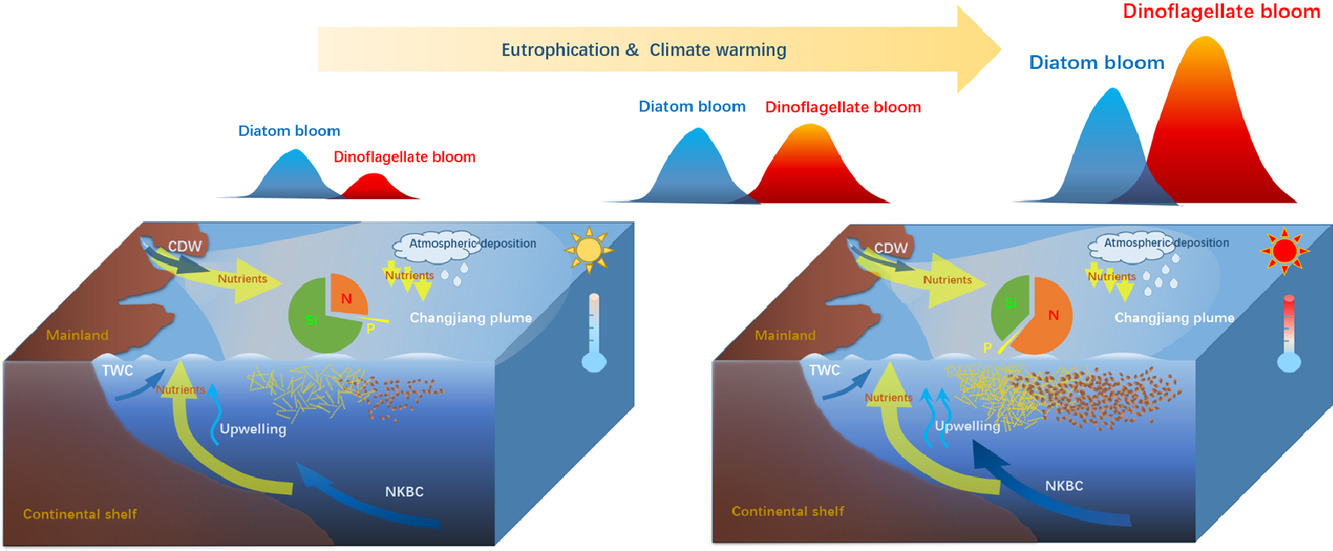Under the combined impacts of global warming, eutrophication, and other driving forces, harmful algal blooms worldwide are experiencing obvious changes.
Around 2000, an apparent shift of bloom-causative microalgae from diatoms to dinoflagellates was observed in the East China Sea, and large-scale blooms caused by dinoflagellates were annually recorded since then. Large-scale dinoflagellate blooms pose a severe threat to the mariculture industry, marine ecosystems, and even public health.
Recently, a research team led by Prof. YU Rencheng from the Institute of Oceanology of the Chinese Academy of Sciences (IOCAS) has revealed how harmful algal blooms change under eutrophication and warming scenarios in the East China Sea.
The study was published in Water Research on July 2.
The researchers developed a zero-dimensional numerical model to focus on the temporal succession of two dominant microalgal taxa in coastal East China Sea waters. Based on the model, they reproduced the succession processes of spring blooms in two typical years, and conducted a set of scenario analyses to explore the evolving trend of harmful algal blooms in the near future under the ongoing regional trend of increasing eutrophication and ocean warming.
The simulated evolution features over the next 30 years pointed out that the dinoflagellate blooms would become more frequent with higher peak biomass concentrations if the environmental conditions changed as usual. Changes in nutrient composition of the Changjiang riverine discharge may largely give rise to the evolution of harmful algal blooms, and accelerated warming associated with climate change would result in earlier occurrence of dinoflagellate blooms.
"Reduction of the nutrient input and adjustment of nutrient composition could be feasible management strategies to prevent the further intensification of dinoflagellate blooms. Reducing the riverine nitrogen inputs, maintaining or even simultaneously increasing those of silicate will provide an effective strategy for the situation in the East China Sea," said Dr. ZHOU Zhengxi, first author of the study.
"This research offers a relevant and useful case study to improve current understanding of the evolving trend in algal bloom development and composition, and to support the development of prevention strategies for large-scale dinoflagellate blooms," said Prof. YU.
This work was supported by the Strategic Priority Research Program of the Chinese Academy of Sciences, the National Natural Science Foundation of China and the CAS-CSIRO BAU project of the Chinese Academy of Sciences.







